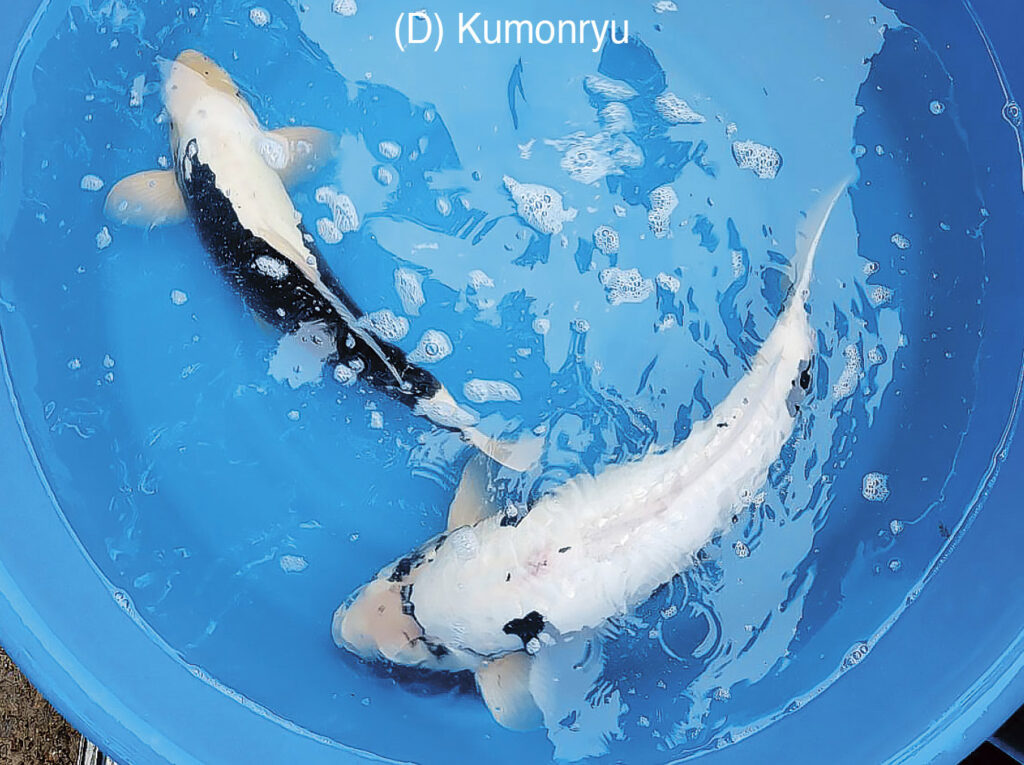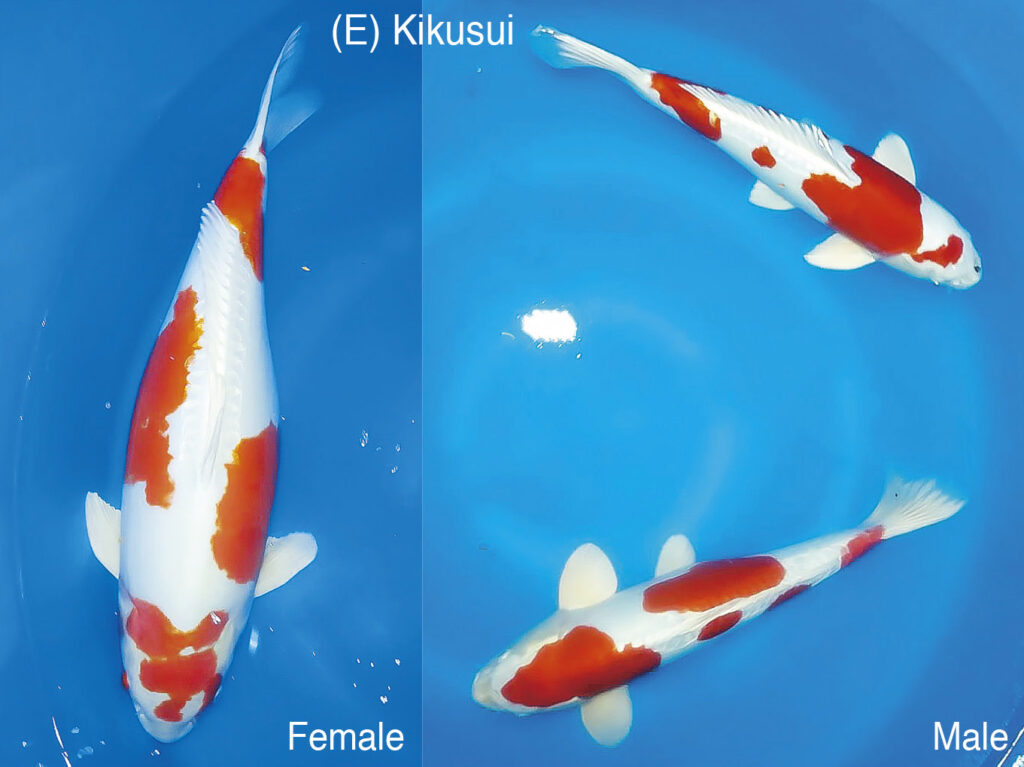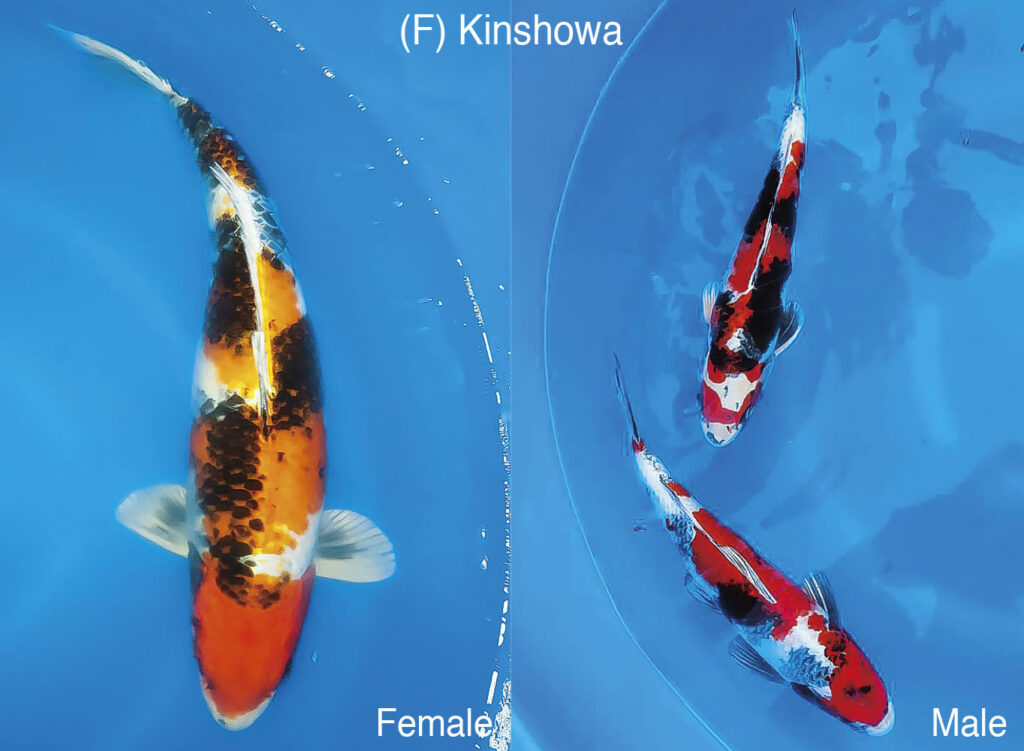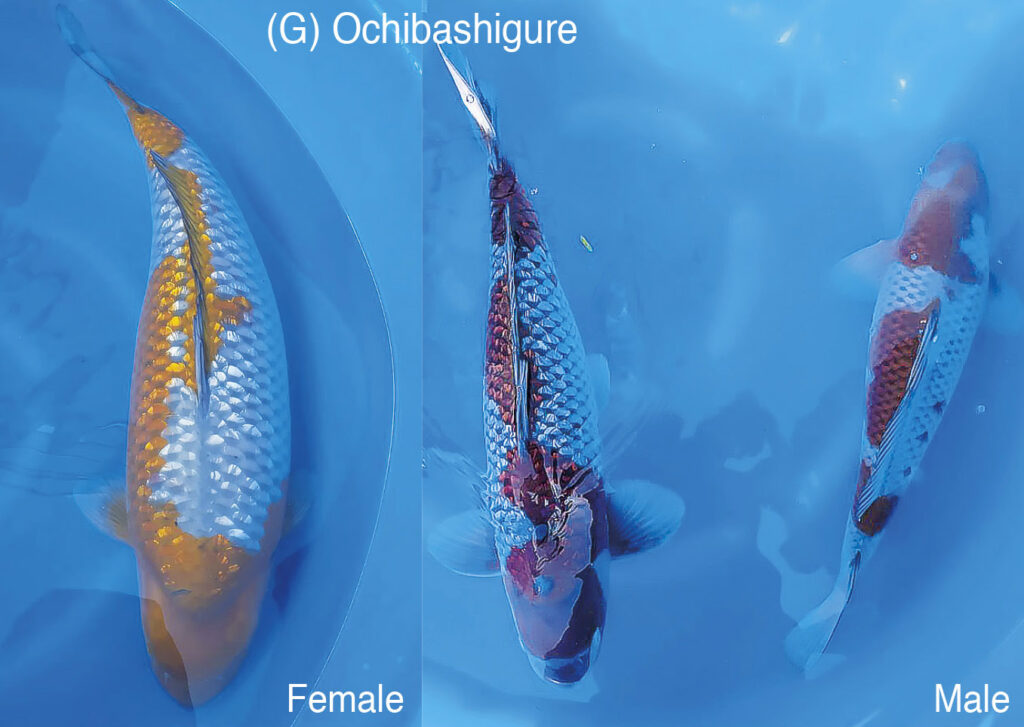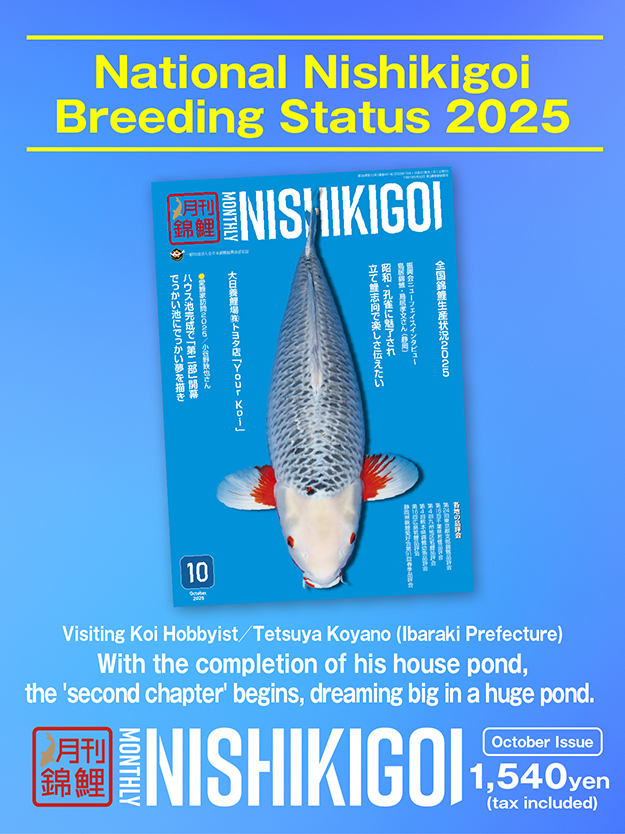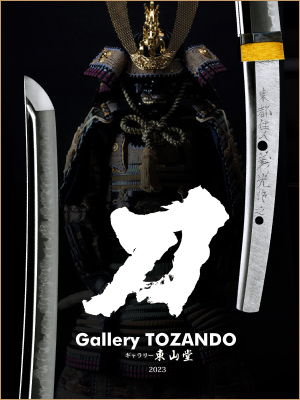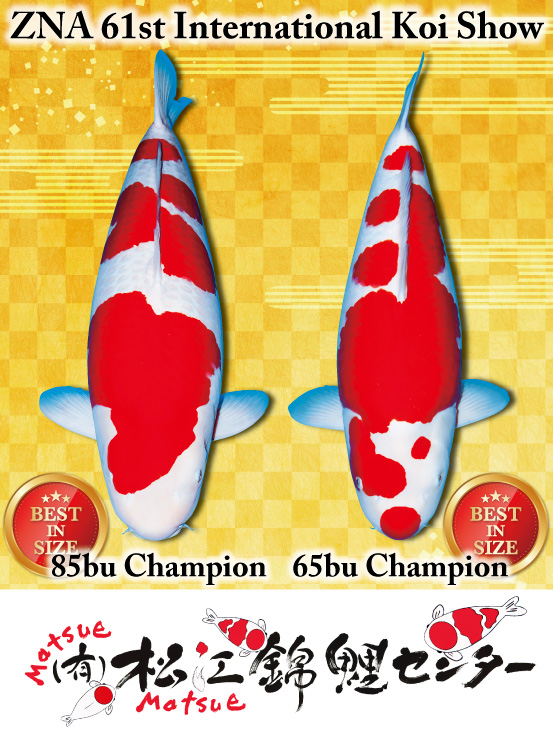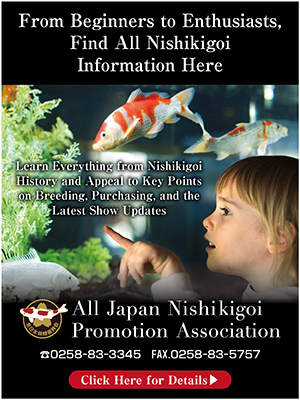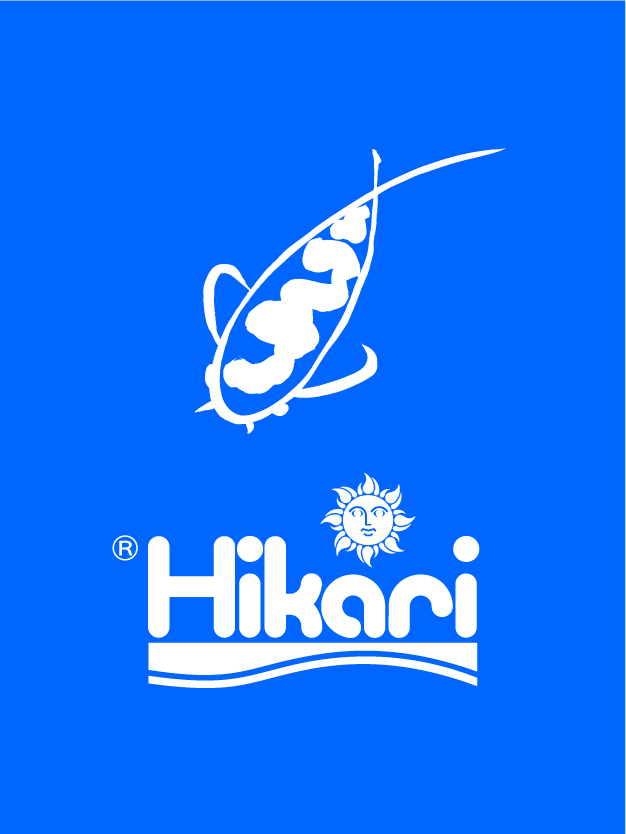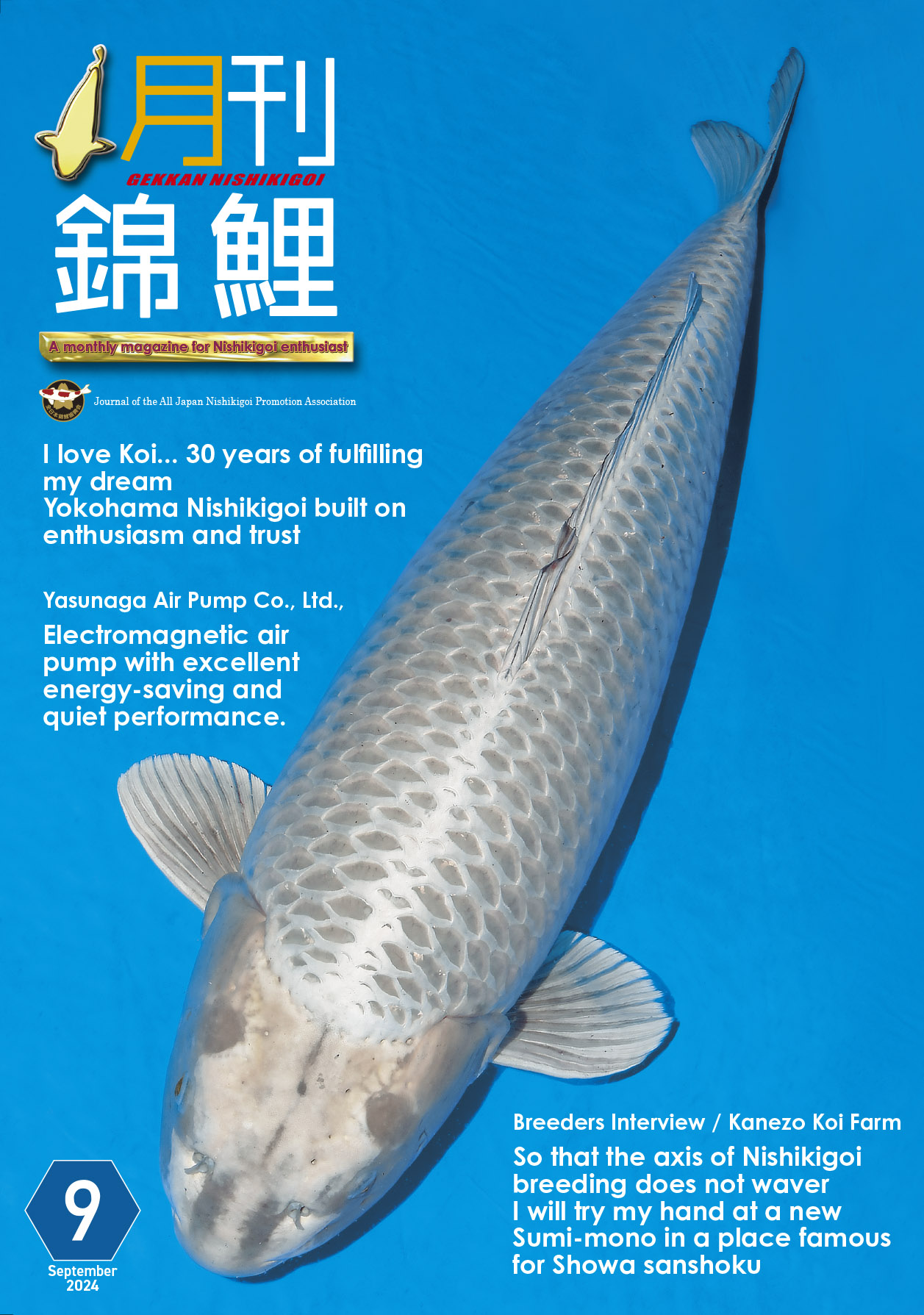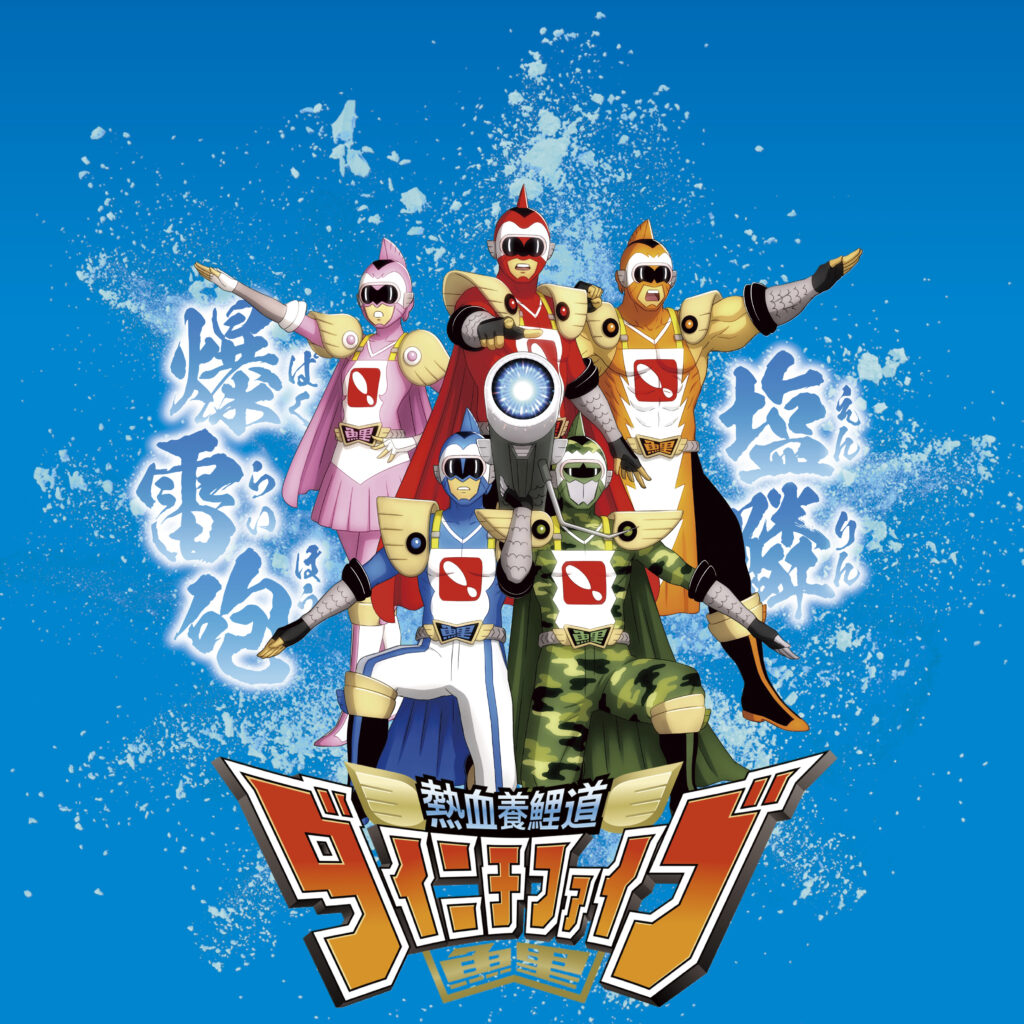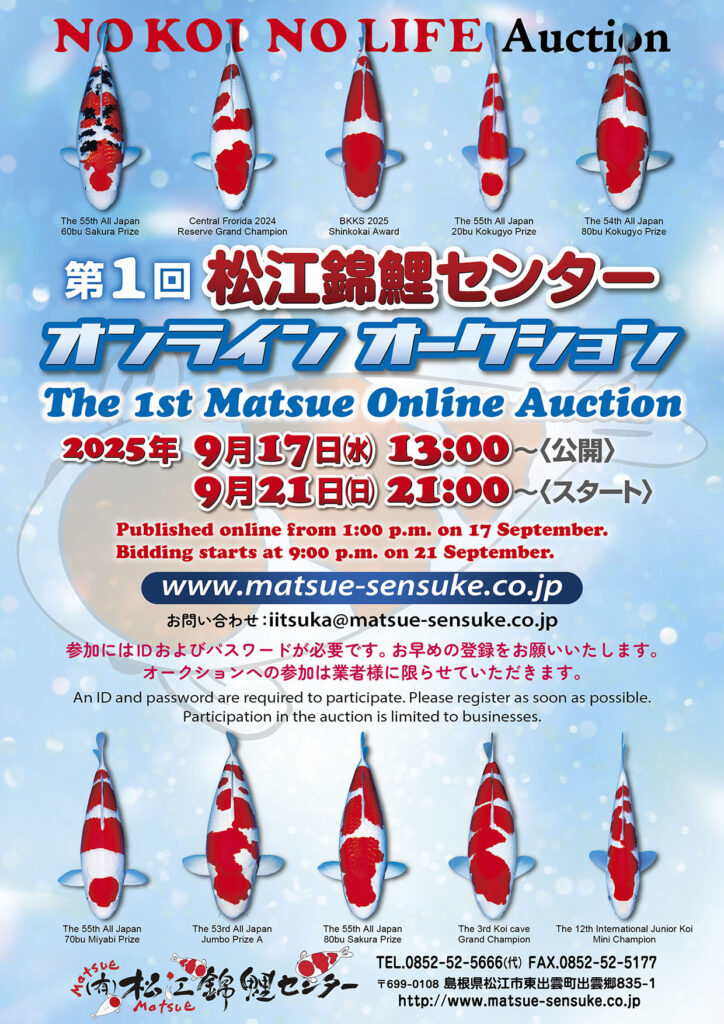— Depending on the water, is it possible for blackish to emerge from the red areas?
Hirasawa: I suppose it’s possible. However, for example, the males from Kokugyo Award 50 bu have mostly stayed the same (A). The beni is beautiful. I used these three males and the female I used, which got Sogyo champion overall.
— The one in the middle is a Goshiki, similar to Kohaku.
Hirasawa: Yes, that’s right. When I bought it from Kawakami, it was completely black, but the black has faded suddenly, and now it looks like Kohaku, but the Koi is good quality. Now, sumi is gradually coming out from around the base of the dorsal fin.
— This is a set of Tancho Goshiki (B).
Hirasawa: This year, I tried pairing two Tanchos together.
— It’s a set intended specifically for breeding Tancho. Are there any regular Goshiki that can come from this combination?
Hirasawa: I feel Koi with patterns from Tancho aren’t excellent quality. The Tancho itself is good,though.
— Your Ginrin-Goshiki sometimes won awards. Are the parents also ginrin?
Hirasawa: One of the parents is Ginrin, Anette. However, Ginrin has a low success rate. Apart from Goshiki, this year, I’m also working on varieties like Koromo, Ginrin-Showa, Ochibashigure, Doitsu-Showa, Kin-Showa, Sanke, Kikusui, Sakura-Ogon, Ginrin-Soragoi, Ginrin-Kumonryu, Doitsu-Ochiba, and Kinkiutsuri.
— Are you making Kawarimono lineage each one sets?
Hirasawa: Regarding Kikusui and Kin Showa, I induced the spawning of two females for each type. I crossed KinShowa from Takatatsu’s female with a male from Kintaro. And Kikusui originates from the bloodlione of Yagengi.
— You’re pretty broad in your approach. It’s surprising.
Hirasawa: I’m worried about having just one variety. It’s often said that Goshiki tends to weaken in Southeast Asia. They are said to turn white and become lousy quality.
In Southeast Asia, dealers who have installed water temperature-lowering cooling systems are completely okay. They even assure us that they can properly care for Goshiki purchased, saying they’ll keep them well. However, such facilities require investment.
— They have such excellent facilities. Overseas dealers are impressive.
Hirasawa: My place has many ponds, so we need to take a lot of fish to fill them up. I have around 80 ponds for fry.
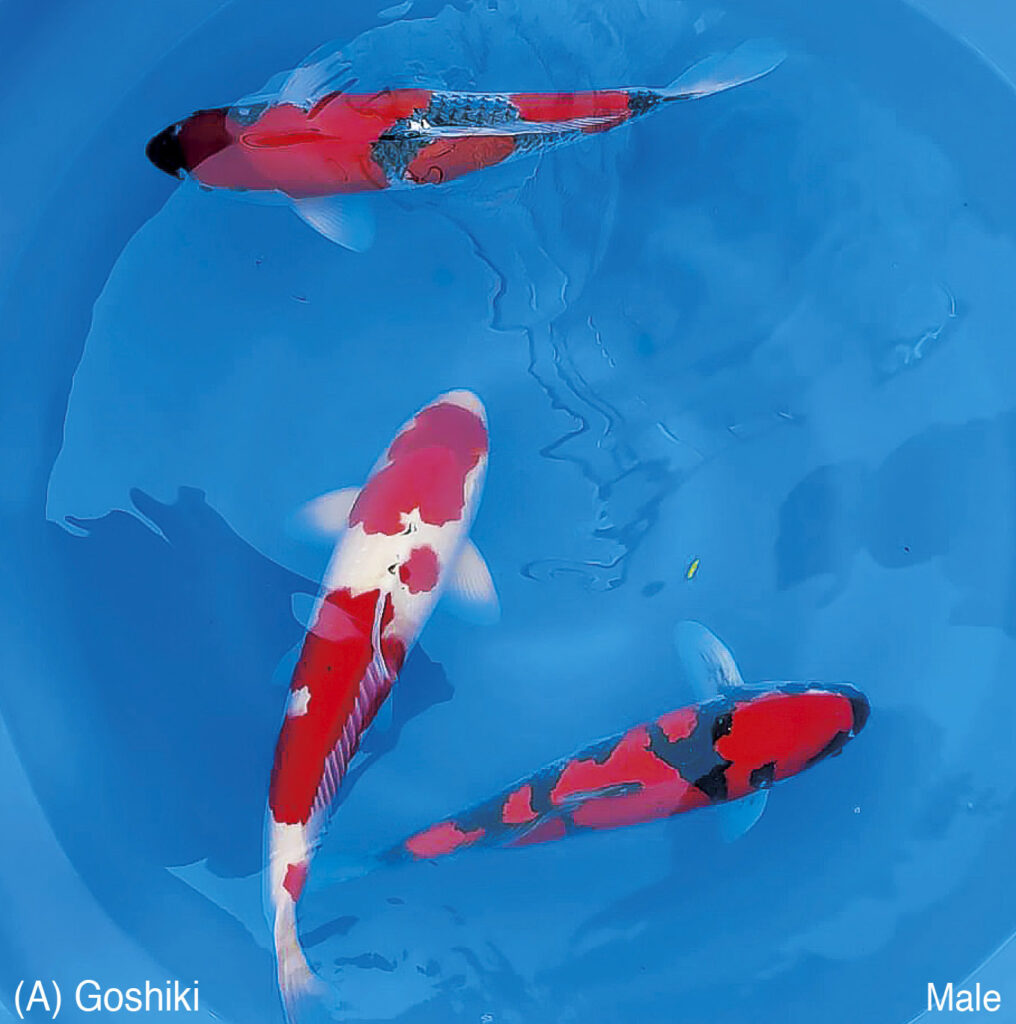
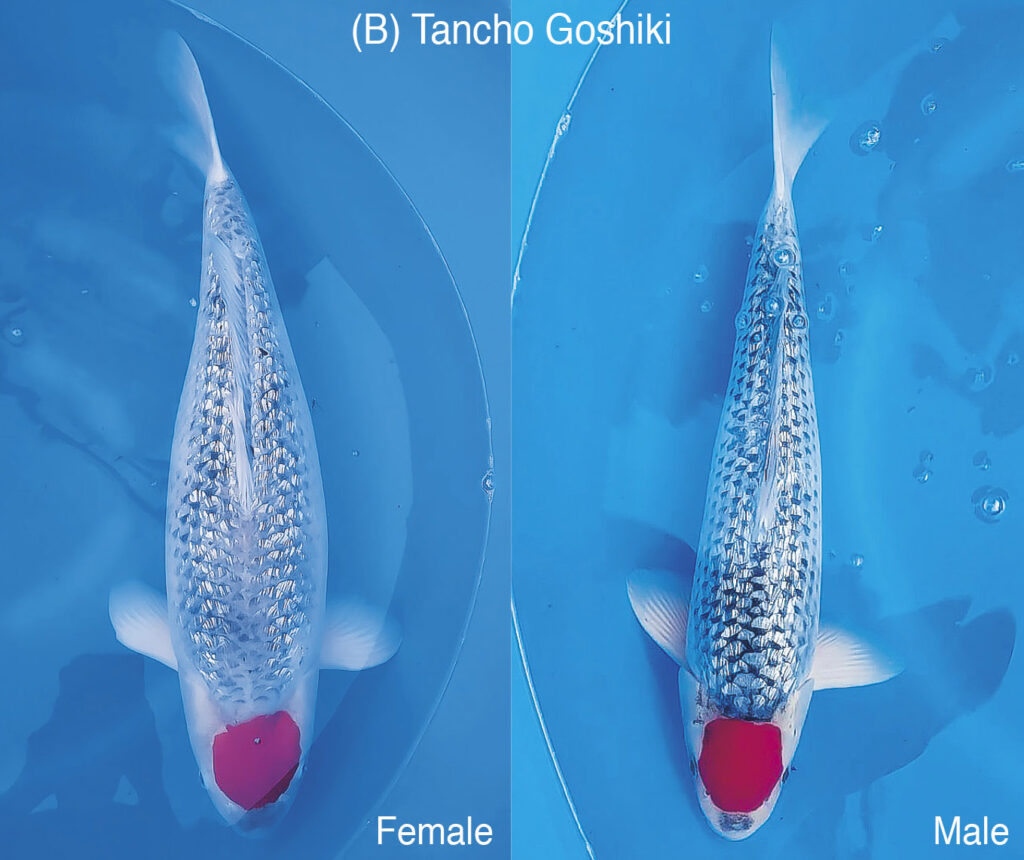
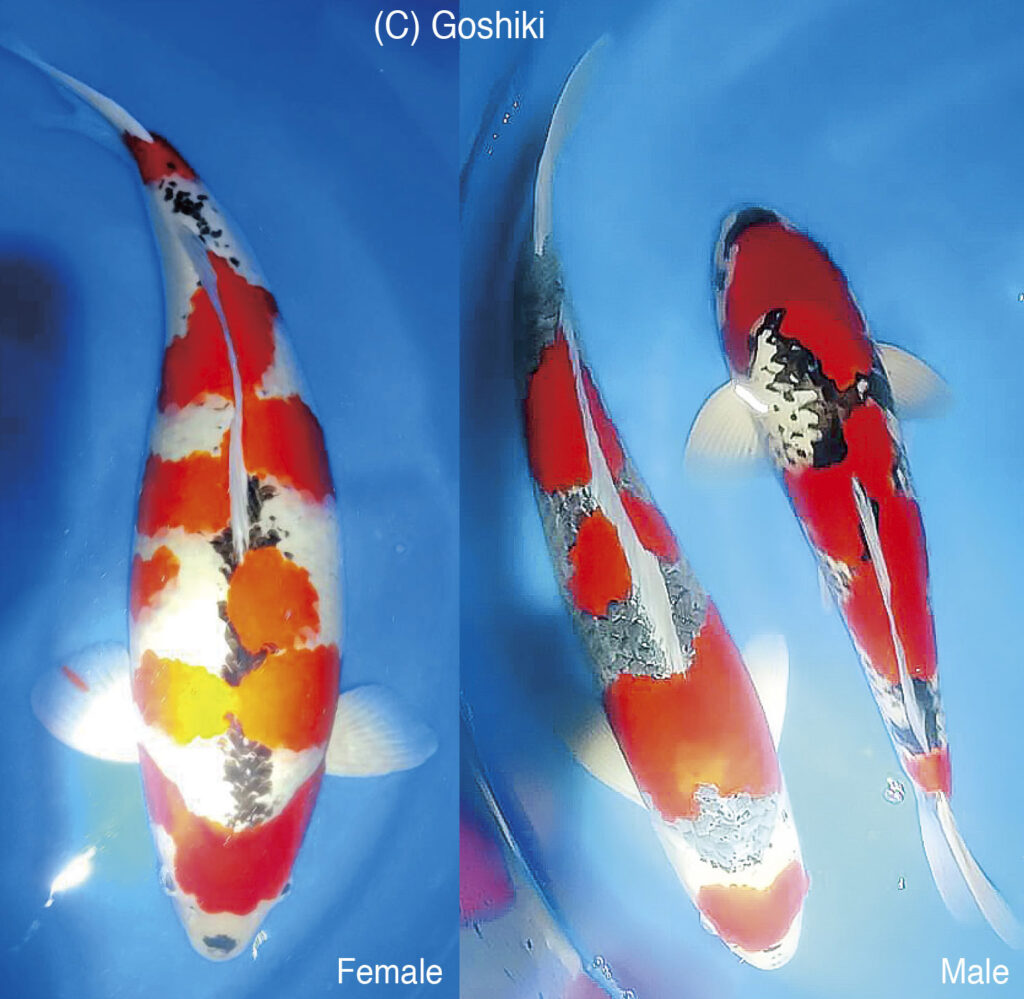
— Well, you won’t have any trouble with the number of ponds.
Hirasawa: I have too many. There are still people asking if I can borrow their ponds. I can’t manage it all. For the first round of selection in the summer, I have about four people helping.
— So, Kanno is known for Goshiki, traditionally Sanke, but has he started creating Kawari variery relatively recently?
Hirasawa: I’ve been collecting Ochiba for a long time. Tsubaki Awards like GinrinKumonryu have been more recent. Kawakami gave me parents whose offspring were both ginrin and ordinary Kumonryu.
— It seems that the birth rate of GinrinKumonryu is also low.
Hirasawa: Kikusui isn’t that old either, and it’s Sakuraogon’s first time. The female is from Maruhiro. Ginrin Sakura-Ogon crossed one male of Kintaro, and I added one male of Kikusui. I thought it would be interesting if Kikusui had a sparkling effect like aragoke. Doitsu-Show originates from Ushizo.
— I don’t see any Kohaku.
Hirasawa: There are no Kohaku. Occasionally, I get Ginrin-Kohaku from the parent of Momotaro on the second round. Still, I’ve also tried making regular Kohaku, and no matter how many times I try, I can’t get them. Even when we receive fry from Momotaro, it’s still no good, so we’ve concluded that the water doesn’t suit them. It could be a lack of skill.
My immediate goal is the overall B in the Koi Show.
Prioritise both beauty and quality above all else.
— What would be the next goal after reaching Mature Champion in the overall division at the All Japan Combined Nishikigoi Show?
Hirasawa: I wanted to win the Grand Champion B category in this year’s Young Koi Show. I have previously won the Himeji Castle Award (16, 35th National Young Koi Show), but at that time, I chose from among the Sakura・Tsubaki・Botan categories and made the final decision. But now, the Overall B category is first selected in this Koi Show.
— That becomes the first goal, right?
Hirasawa: Dai from Momotaro (Daisuke Maeda, Okayama Momotaro Koi) and I are good friends, so our fish tanks are placed next to each other in both the Overall and Overall B categories of the Koi Show. We’ve agreed that if our koi win in each other’s categories, we’ll celebrate together. This year, I couldn’t do it. Dai considers me his younger brother, and Michio Maeda, chairman, also treats me very well.
